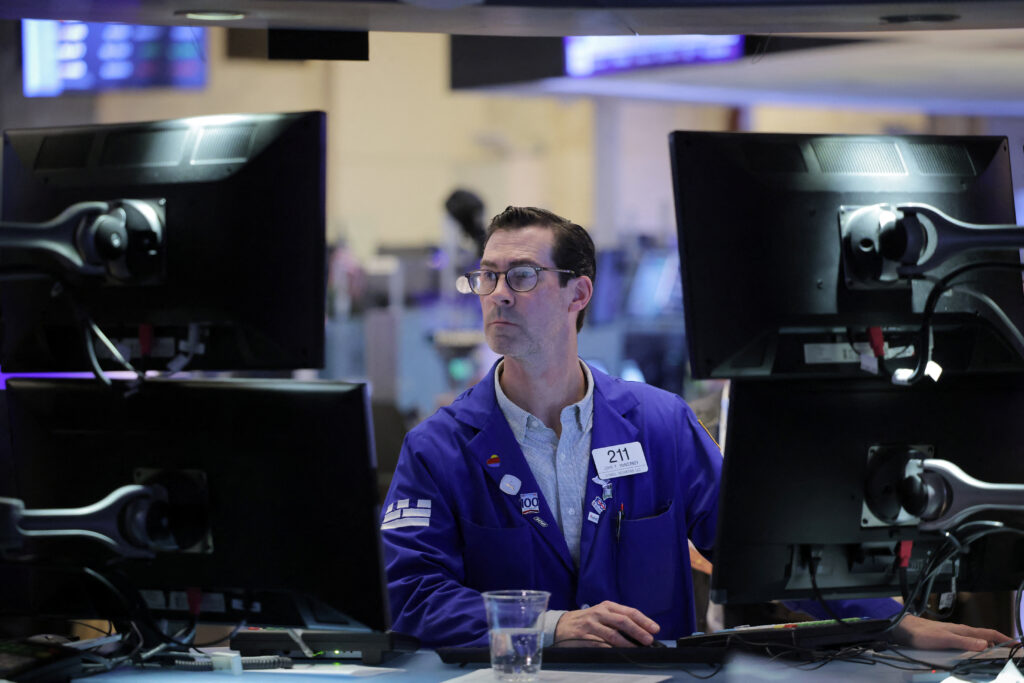Are volatile markets a trader’s worst nightmare or a lucrative opportunity? When handled appropriately, times of increased volatility can yield significant returns for the astute day trader. Success in unpredictable times requires a thorough plan based on tried-and-true volatility strategies.
Proper strategies enable you to navigate uncertainty and potentially succeed in a fast-paced environment. However, for that, you need to understand the key concepts and implement effective risk management techniques.
Understand Market Volatility
Market volatility is a regular occurrence that reflects investor apprehension and shifting trends in the economy. It offers potential for profit, but it can also be uncomfortable. Think of a roaring river compared to a sluggish pond. The pond provides little opportunity for rapid gains because price swings are gradual and predictable. On the other hand, the river’s currents cause sharp changes in pricing, from which competent traders can profit.
But there are two sides to volatility. The same sharp price swings that present profitable possibilities can, if poorly handled, also result in significant losses.
Best Day Trading Stocks to Invest In
Volatility is king for day traders looking for intraday activity. However, it can be overwhelming to choose the proper stock because there are so many possibilities. Based on their Average Day Range (ADR) and Average Volume (30), let’s examine the five best stocks for day trading:
-
Canopy Growth Corp. (CGC)
CGC has the highest ADR (16.77%) on this list, indicating large intraday price fluctuations. This volatility can be profitable for astute traders as it presents several chances for rapid entry and exit. On the other hand, there is a chance for increased losses.
Although CGC’s 20 million average volume indicates reasonable liquidity, it might not be the best option for those looking for highly traded stocks.
-
Marathon Digital Holdings (MARA)
MARA balances liquidity (average volume of 50 million) and volatility (ADR of 9.09%). Because of this, it can be a suitable choice for day traders who still want a respectable trading pool but want some flexibility.
MARA may have less extreme price swings than CGC, necessitating more exact timing to profit.
-
Sunrun Inc. (RUN)
Here, RUN has the lowest ADR (7.38%). This results in less significant price fluctuations but can also mean lower profit margins for day traders.
The average volume of 14 million indicates a moderate level of liquidity, making it appropriate for traders who would instead operate in a less congested market. RUN, however, might not be the best option for day traders looking for fast-paced activity.
-
Coinbase Global Inc. (COIN)
Instead of being shown as a percentage, the intraday range for COIN is shown as a dollar sum ($17.21). This makes comparing the stocks directly a little challenging.
However, the number points to some reasonable volatility, which can be attractive to day traders who like the fast-paced nature of the cryptocurrency market. The average volume, which is 12 million, is in the medium range and provides moderate liquidity.
-
Tesla Inc. (TSLA)
The massive electric vehicle company TSLA has an impressive volume (93 million) and a decent ADR (6.39%). For day traders with a penchant for well-known brands, this combination offers reasonable volatility and plenty of liquidity.
Nonetheless, TSLA may have less volatile price swings than some other choices, necessitating more deliberate entry and exit points.
Strategies to Adopt During a Volatile Market
These stock option trading strategies will help you make better decisions during fluctuations and uncertainties in the market–
Momentum Trading
Following trends is the essential component of momentum trading. By buying a stock or other financial instrument during an uptrend and selling it during a downtrend, those who use this strategy hope to profit from changes in the stock’s value.
Technical analysis plays a major role in this strategy since traders use a variety of indicators to identify patterns and forecast changes in momentum.
The key metrics that are used are:
- Relative Strength Index (RSI)
- Stochastic Oscillator
- The Momentum Indicator
- Moving Averages
Range Trading
When an asset regularly trades inside a particular price range over a predetermined period, range trading is a strategy used. Generally, this range’s bottom offers support, and its top offers resistance. By utilizing this method, traders hope to profit from price swings inside the range by purchasing at the support level and selling at the resistance level.
Technical indicators, such as the relative strength index (RSI), stochastic oscillator, and commodity channel index (CCI), are frequently used by traders to determine when to enter and quit a trade.
Reversal Trading
The goal of reversal strategy trading is to take advantage of shifts in the direction of a stock’s price movement. This strategy looks for signs of an approaching trend reversal, such as declining momentum, changes in trading volume, and patterns, such as lower highs or higher lows emerging.
Trend Following
Buying securities when their prices are rising and selling them when they are falling is the core of the trend-following strategy. The idea behind this strategy is that security prices are set by law. Move in observable patterns that traders can profit from if they can accurately identify them.
Trend-following strategies apply to all types of securities that exhibit trending price behavior and can be tailored to suit different trading lengths, ranging from short-term to long-term undertakings.
Scalping
Buying securities when their prices are rising and selling them when they are falling is the core of the trend-following strategy. The idea behind this strategy is that security prices are set by law. Move in observable patterns that traders can profit from if they can accurately identify them.
Trend-following strategies apply to all types of securities that exhibit trending price behavior and can be tailored to suit different trading lengths, ranging from short-term to long-term undertakings.
Breakout Trading
In breakout trading, traders open a position when the price of an asset rises above resistance or falls below levels of support, signaling the start of a strong trend. Finding these support and resistance levels and holding off until a breakout is confirmed—often accompanied by a rise in volume—are crucial components of this technique.
When a breakout is verified, traders establish stop-loss orders and price targets. They base the former on the size of the price pattern or recent price swings and the latter on the previous level of support or resistance that ought to serve as the new level of support or resistance.
How to Manage Your Emotions and Stay Focused?
-
Discipline is Key
The key to successful good-day trading stocks is discipline. Don’t let emotional fluctuations cause you to pursue losses or stray from your plan. Accept the loss and move on if a trade doesn’t work out for you.
-
Maintain Perspective
It is not a personal attack, but a normal market occurrence is volatility. Don’t let temporary setbacks depress you. Keep your long-term trading objectives in mind, and keep in mind that even experienced traders have failures.
-
Develop a Trading Plan
Emotions can be removed from the equation by having a clear plan that specifies entry and exit locations, risk management techniques, and position sizing. Adhere to your plan and refrain from making snap decisions motivated by greed or fear.
-
Take Breaks
Day trading can put a lot of mental strain on one. Take occasional breaks from the screen to avoid mental strain and emotional exhaustion. Trading judgments are better made with a clear head.
Conclusion
While volatile markets can be intimidating, they can become a lucrative playground for day traders with the proper strategies and risk management. By understanding volatility, implementing effective trading techniques, and maintaining emotional control, you can navigate uncertainty and potentially achieve success in this fast-paced environment.
Remember, dedication, a well-defined plan, and a cool head are essential for profiting in these dynamic markets.
Peter Williams, a financial writer with over five years of experience, specializes in covering stock market movements, bond markets, commodities, and macroeconomic trends.










